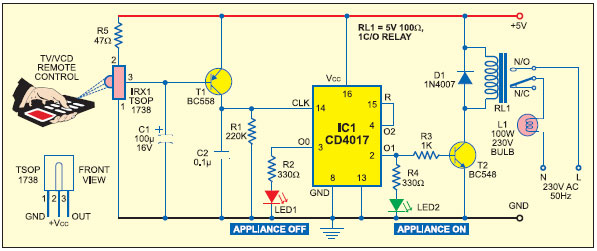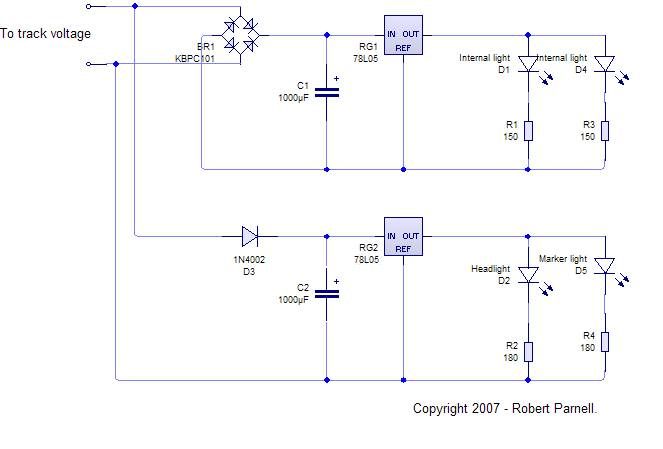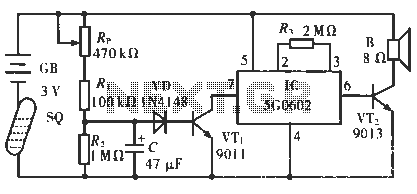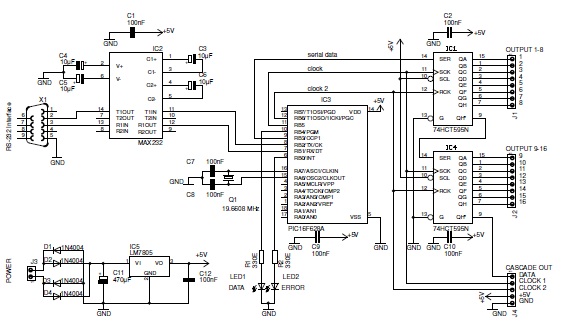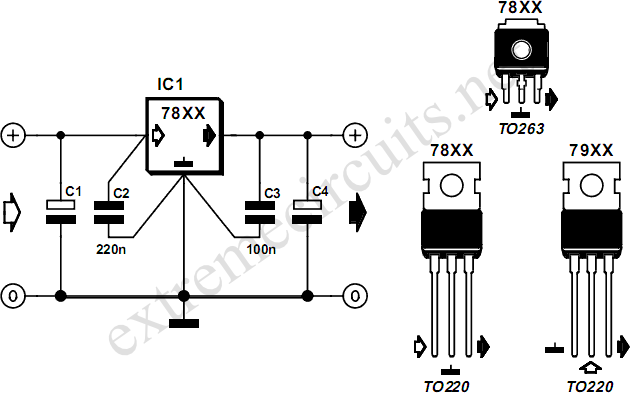
Battery charger using LM317 regulator circuit
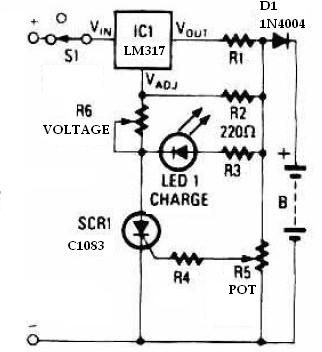
This schematic circuit for a battery charger consists of very few components but operates effectively. When power is applied to the circuit, SCR1 remains off, preventing any bias current from flowing to ground. The LM317 voltage regulator is connected to the battery through diode D1, a limiting resistor R1, and a bias resistor R2. Diode D1 serves to prevent the battery from discharging through the LED and SCR when power is removed from the circuit. When LED1 is illuminated, the circuit functions in voltage-regulating mode; conversely, when LED1 is off, the circuit transitions to current-regulating mode.
The described battery charger circuit utilizes a minimalistic design, leveraging the LM317 voltage regulator, which is known for its versatility in providing a stable output voltage. In this configuration, SCR1 acts as a switch that remains off until the circuit is powered, ensuring that no current flows to ground initially. This feature is critical for maintaining circuit integrity during startup.
Diode D1 plays a crucial role in protecting the battery by blocking reverse current flow when the power supply is disconnected. This prevents potential damage to the battery and ensures longevity by avoiding unnecessary discharge through the LED and SCR components. The inclusion of limiting resistor R1 is essential for controlling the current flowing to the battery, thereby preventing overcharging, which can lead to battery failure.
The bias resistor R2 aids in setting the appropriate reference voltage for the LM317, allowing it to regulate the output effectively based on the battery's charge state. The operation of the circuit is indicated by LED1, which provides visual feedback on the charging status. When LED1 is on, it indicates that the battery is being charged in voltage-regulating mode, which is suitable for maintaining the battery at a specific voltage level. In contrast, when LED1 is off, the circuit switches to current-regulating mode, which is necessary for the final stages of charging, ensuring that the battery receives a safe and controlled current.
Overall, this battery charger circuit exemplifies an efficient design that balances simplicity with functionality, making it suitable for various battery charging applications.As you can see in this schematic circuit this battery charger has extreme few components, but is doing a very good job. When power is applied to the circuit the SCR1 is off, so there is no bias-current path to ground. The LM317 is connected to the battery through diode D1, limiting resistor R1, and bias resistor R2. The D1 diode is used to preve nt the battery from discharging through the LED and the SCR when power is removed from the circuit. When LED1 is on, the circuit is in the voltage-regulating mode and when LED1 is off, the circuit is in the current-regulating mode. 🔗 External reference
The described battery charger circuit utilizes a minimalistic design, leveraging the LM317 voltage regulator, which is known for its versatility in providing a stable output voltage. In this configuration, SCR1 acts as a switch that remains off until the circuit is powered, ensuring that no current flows to ground initially. This feature is critical for maintaining circuit integrity during startup.
Diode D1 plays a crucial role in protecting the battery by blocking reverse current flow when the power supply is disconnected. This prevents potential damage to the battery and ensures longevity by avoiding unnecessary discharge through the LED and SCR components. The inclusion of limiting resistor R1 is essential for controlling the current flowing to the battery, thereby preventing overcharging, which can lead to battery failure.
The bias resistor R2 aids in setting the appropriate reference voltage for the LM317, allowing it to regulate the output effectively based on the battery's charge state. The operation of the circuit is indicated by LED1, which provides visual feedback on the charging status. When LED1 is on, it indicates that the battery is being charged in voltage-regulating mode, which is suitable for maintaining the battery at a specific voltage level. In contrast, when LED1 is off, the circuit switches to current-regulating mode, which is necessary for the final stages of charging, ensuring that the battery receives a safe and controlled current.
Overall, this battery charger circuit exemplifies an efficient design that balances simplicity with functionality, making it suitable for various battery charging applications.As you can see in this schematic circuit this battery charger has extreme few components, but is doing a very good job. When power is applied to the circuit the SCR1 is off, so there is no bias-current path to ground. The LM317 is connected to the battery through diode D1, limiting resistor R1, and bias resistor R2. The D1 diode is used to preve nt the battery from discharging through the LED and the SCR when power is removed from the circuit. When LED1 is on, the circuit is in the voltage-regulating mode and when LED1 is off, the circuit is in the current-regulating mode. 🔗 External reference

